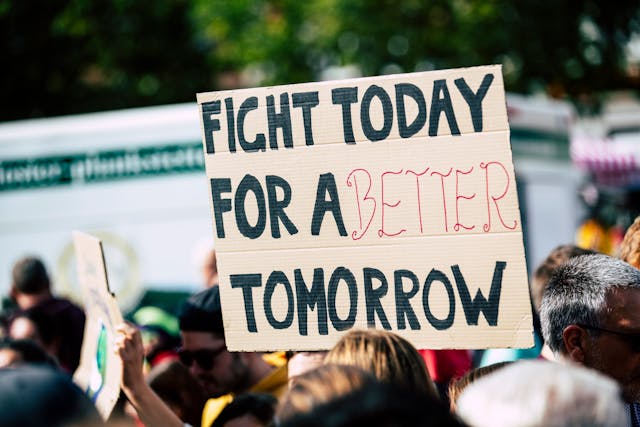TikTok has become the unexpected home for sustainability. Scroll through the app today and you’ll see upcycling hacks, zero-waste kitchen swaps and thrifted fashion hauls. What was once a niche community has gone mainstream, thanks to hashtags that are racking up billions of views.
Eco-content is no longer just about education. With the right format, creators are reaching massive audiences and inspiring people to rethink their daily lives.
Green Hashtags Going Viral
Hashtags have always been a way to curate content, but in the last two years, green tags have exploded.
#sustainableliving has over 4 billion views, #ecofriendly and #zerowaste are in the billions as well. Niche trends like #upcycling, #thrifthaul and #planttok have become global movements.
A high TikTok views count is not vanity, it’s influence. Each viral video under these hashtags puts environmental ideas into millions of feeds, sparking conversations that go beyond social media.
The effect is snowball-like. Once a clip goes viral, the algorithm makes sure it travels further, often across countries and languages. A single 20-second composting hack can inspire thousands to try it themselves, showing how virality can be used for real-world impact.
What Works in Eco Content
Not every post gets an audience but some formats work every time:
- Quick tips: simple hacks like turning glass jars into planters or making natural cleaning products.
- Before-and-after videos: showing dramatic transformations from polluted spaces to wardrobes refreshed with thrifted clothes.
- Trend remixing: pairing sustainability tips with trending audio or challenges to make it shareable.
- Personal journeys: creators documenting their zero-waste lifestyle or plastic-free experiments.
Accounts like Sustainably Vegan, Immy Lucas and EcoTok have built a community by mixing practical advice with relatable storytelling. These examples show that authenticity is just as important as the message.
The key is to make sustainability feel achievable. By framing it in everyday language creators make eco-friendly choices seem realistic not intimidating.
Community and Conversation
TikTok’s interactive features turn sustainability into a movement. Under green hashtags viewers don’t just watch they contribute.
A thrift haul video will often spark duets where other users show off their own second-hand finds. A composting tip will lead to stitches where people test the advice in different climates and share results. Even comment sections become mini forums where users trade tips, links and encouragement.
This collective culture makes sustainability feel less like a solo mission and more like a shared journey. Fans become co-creators adding layers of knowledge that one post can’t deliver alone.
Collective Energy
At the same time this collective energy makes TikTok super powerful for environmental causes. Movements like #FridaysForFuture and #PlasticFreeJuly have been able to mobilise young audiences at scale.
The result is a space where awareness and activism feed off each other, turning short clips into sparks for bigger environmental conversations.
Challenges and Risks
The rise of eco-content is great but it comes with warnings.
- Oversimplification: systemic issues like emissions from agriculture or manufacturing can be reduced to “swap plastic for glass” which can mislead audiences.
- Greenwashing: brands will attach themselves to hashtags with shallow campaigns that don’t reflect real environmental commitment.
- Algorithm pressure: important content can get buried if it doesn’t hook viewers instantly.
These warnings mean we need to be critical consumers. While TikTok makes sustainability accessible it also makes discernment necessary.
From Trends to Real-World Change
TikTok trends start as quick clips but their impact can spill out beyond the app.
- Thrift and second-hand shopping: Hashtags like #ThriftTok have made vintage clothing cool again, boosting demand for second-hand stores.
- Waste reduction: Challenges like “Plastic-Free July” or “Zero-Waste Week” have been taken up by schools and community groups, showing how online habits inspire offline action.
- Food choices: Plant-based recipe videos get millions of views, normalising more sustainable diets for younger generations.
The cycle is simple: high TikTok views = visibility, visibility = participation, participation = behaviour. When trends align with real solutions they can shift culture one small step at a time.
Why Visibility Matters
In the sustainability space, visibility is power. TikTok views amplify eco-friendly habits, validate creators and encourage others to join in. A viral video does more than entertain, it normalises greener choices and makes them part of mainstream culture.
High view counts also affect the algorithm itself. When eco content consistently performs well, the platform promotes it more broadly, ensuring environmental messages appear alongside comedy, music and lifestyle clips. That integration is key, helping sustainability become part of everyday digital life, not a niche interest.
Real-world results are already visible. Thrift shops report higher engagement from Gen Z customers inspired by online content. Eco challenges such as “low-waste week” have spread far beyond TikTok, with schools and community groups adopting them offline.
Final Thoughts
The rise of green hashtags shows how digital culture and environmentalism can align. On TikTok, sustainability is no longer an afterthought, it is a movement shaping how millions think about daily life.
Quick tutorials, thrift hauls and creative hacks might look simple, but their reach is profound. With billions of TikTok views pushing eco content into mainstream feeds, sustainable living is moving from trend to habit.
For campaigners, educators and everyday creators, this is an opportunity. Harnessing the momentum of green hashtags could be one of the most effective ways to spread sustainable habits in the decade ahead.





